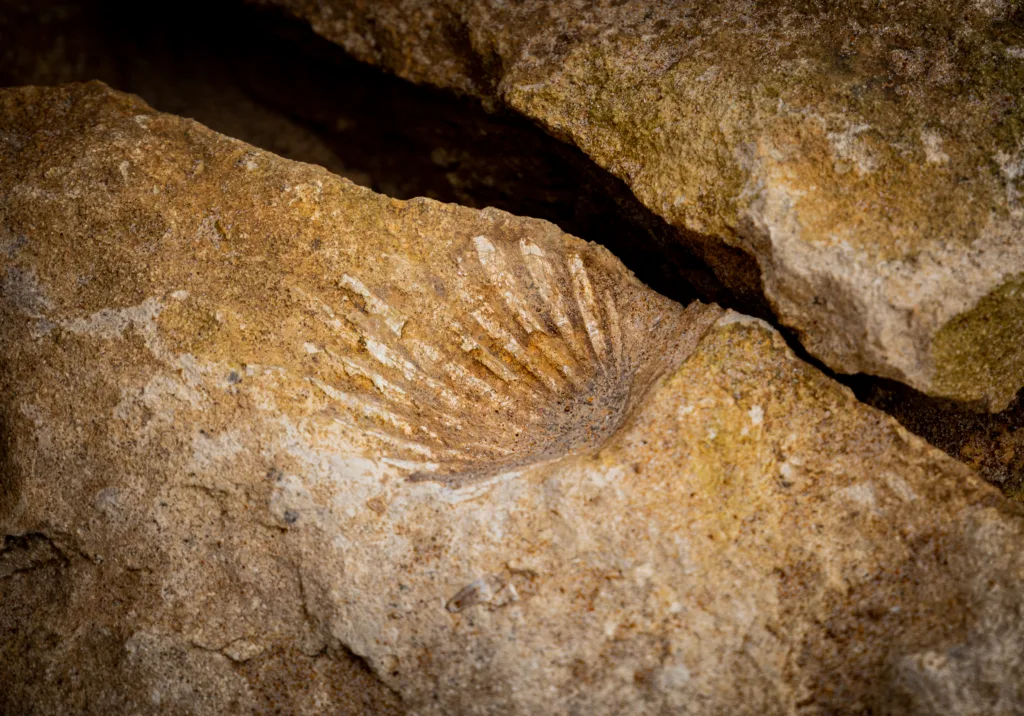Faunal succession is a fundamental principle in the field of geology that has helped scientists to understand the history of life on Earth. This principle is based on the observation that different assemblages of fossil plants and animals follow each other in a predictable manner, even when found in different places.
The principle of faunal succession states that specific fossils of flora and fauna are contained in different layers of rock. This is because some species did not live at the same time as other species. As such, the study of faunal succession has become a valuable tool in the field of geology, helping to distinguish rock units of different ages from one another.
The notion of faunal succession was first recognized in the early 19th century by William Smith, a geologist who noticed that different strata each contained particular assemblages of fossils that could be used to identify and correlate rocks over long distances. Smith noticed that these fossil forms succeeded one another in a definite and habitual order.
Since then, faunal succession has become a unifying principle by whch rock units are categorized and recognized widely. By studying the succession of fossils, geologists have been able to gain insights into the evolution of life on Earth, as well as the changes in the environment that occurred over time.
One of the key benefits of the principle of faunal succession is that it allows geologists to identify the relative age of different rock units. By comparing the fossils found in different layers of rock, scientists can determine which layers are older or younger than others. This information can be used to create a timeline of Earth’s history, helping us to better understand the forces that shaped the planet over time.
The principle of faunal succession is a vital tool in the field of geology that has helped scientists to gain a better understanding of the history of life on Earth. By studying the assemblages of fossil plants and animals found in different layers of rock, geologists can identify and correlate rock units over long distances, as well as determine the relative age of different layers. This information allows us to create a timeline of Earth’s history and gain insights into the evolution of life on our planet.
What Does Principle Of Faunal Succession State?
The principle of faunal succession is an observation that suggests fossilized plants and animals tend to follow each other in a predictable manner over time, regardless of location. This means that particular assemblages of fossils can be used to date rock layers and other geological formations. The principle of faunal succession is based on the idea that different species of plants and animals lived during different time periods, and that as one species became extinct, another woud appear to replace it. This principle has been instrumental in the development of modern geology, providing a reliable method of dating rocks and other geological features.

What Is The Principle Of Faunal Succession Quizlet?
The Principle of Faunal Succession, as described on Quizlet, is a concept in geology that explains how specific fossils of flora and fauna are found in different layers of sedimentary rocks. This principle is based on the idea that different species lived and died out at different times throughout the Earth’s history. Therefore, the fossils found in each layer proide a chronological record of the types of organisms that existed during that time period. This principle is important for understanding the history and evolution of life on Earth, as well as for determining the relative ages of rocks and geological formations.
What Is The Principle Of Faunal Succession And Who Created It?
The principle of faunal succession is a geological principle that refers to the fact that different layers of rocks contain distinct assemblages of fossils, which allows for the identification and correlation of rocks over long distances. The principle also states that these fossil forms follow a specific and predictable order of succession. The principle was fist recognized by William Smith, an English geologist, at the beginning of the 19th century. Smith’s observation of the pattern of fossil succession was a crucial development in the field of geology and laid the groundwork for the development of stratigraphy and the understanding of the geological history of the Earth.
Is Faunal Succession A Principle Of Geology?
Faunal succession is a principle of geology. It is a concept that is based on the observation that different fossil assemblages occur in different rock layers or strata, and that these assemblages can be used to identify and correlate the relative ages of these rock layers. The principle of faunal succession states that fossils found in a paticular rock layer are characteristic of a specific period in Earth’s history, and that these fossils can be used to date and correlate rocks in different areas. This principle has played a significant role in the development of modern geology and has been used to establish the relative ages of rock formations all over the world.

Conclusion
The Law of Faunal Succession has provided valuable insights into the history of the Earth’s flora and fauna. This principle has allowed geologists to categorize and recognize rock units of different ages based on the assemblages of fossils contained within them. The observation that specific fossils of plants and animals are found in different layers of rock has led to a greater understanding of the timeline of the planet’s evolution. As William Smith recognized at the beginning of the 19th century, the succession of fossil forms follows a definite and habitual order, making it possibe to correlate rocks over long distances. Today, faunal succession remains an essential tool in the study of geology, providing a comprehensive framework for understanding the history of life on Earth.
